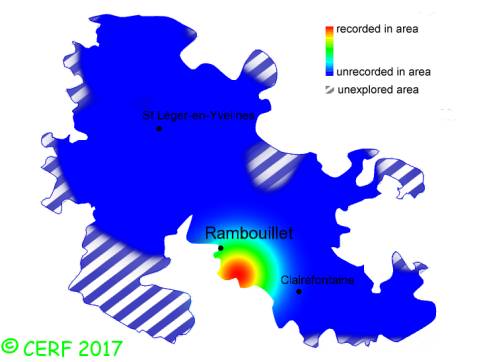New classification: Basidiomycota/Agaricomycotina/Agaricomycetes/Incertae sedis/Russulales/Russulaceae
Former classification: Basidiomycota/Homobasidiomycetes/Agaricomycetideae/Russulales/Russulaceae
synonyms: Lactarius blennius-fluens, Lactarius blennius-albidopallens
edibility : unknown edibility
|
|
|
The cap is olive-green to slate-grey or grey-brown, often with concentric bands, convex, then flattened and later with a shallow depression at the centre; its margin is incurved, irregular, hairless, sometimes lobed or wavy, finely radially wrinkled.
The cap surface is finely banded with dark green-brown concentric bands, sticky and viscid when damp.
The stem is cylindrical, smooth, full then hollow, whitish to grey, washed with olive green, turning brown when handled, without ring.
its texture is grainy (breaking like a chalk stick).
The gills are .
The spore print is white. This species is mycorrhizal.
It grows on the ground.
The fruiting period takes place from July to November.
| Dimensions: | width of cap approximately 8 cm (between 4 and 13 cm) |
| | height of stem approximately 6 cm (between 2.5 and 8 cm) |
| | thickness of stem (at largest section) approximately 15 mm (between 10 and 30 mm) |
Chemical tests : none.
Lactarius fluens is rare and confined in the forest of Rambouillet, and is infrequent, more generally speaking
.
|  | | Above : distribution map of Lactarius fluens in the forest of Rambouillet |
|
page updated on 14/01/18
